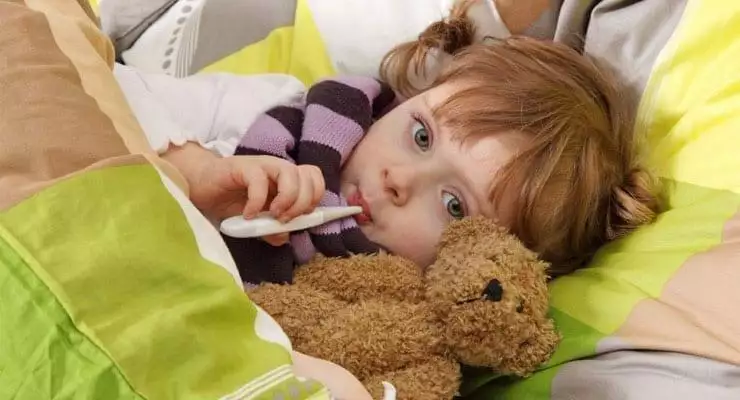Fevers in children can be frightening for their parents. In fact, the leading cause of emergency room visits for children is a fever, according to eMedicinehealth. In most cases, fevers caused by a minor infection, but some types of fever in children are more serious and can be a cause for concern.
Types of Fever in Children
Function
A fever is the body’s reaction to an infection. In adults and children, the hypothalamus responds to an invasion by a virus or bacteria by increasing the body’s temperature. This is because most viruses and bacteria thrive at around 98 degrees F, according to MedlinePlus. A higher body temperature weakens the invaders and allows the immune system to more effectively fight the illness.
Types
Most fevers are temporary. They last for the course of the infection only. Viral infections, particularly of the respiratory system, are the most common cause of fever in children, according to eMedicinehealth. These usually clear up in less than a week. Fevers that are chronic come and go on a regular basis. Just when you think the fever is gone for good, it returns. Chronic fevers in children can signify a more serious underlying condition than temporary fevers, such as an inflammatory disorder. Alternatively, they can be caused by teething or a urinary tract infection. In very rare cases, the cause of chronic fevers is never diagnosed. These are called fevers of undetermined origin.
Treatment
Fevers are usually treated for comfort reasons. Ibuprofen and acetaminophen are often given to children to reduce a fever and accompanying aches and pains. Never give a child aspirin, as it can cause a rare but dangerous disease. The underlying cause of a fever sometimes also needs to be treated. If the cause is a bacterial infection, such as in the case of many ear infections, antibiotics may be prescribed.
Expert Insight
Children under the age of 5 may suffer from febrile seizures, according to the MayoClinic.com website. Only a small percentage of children have these seizures, and they are usually triggered by a viral infection. During the seizure, the child may lose consciousness and suffer from convulsions. While this is scary for both the child and her parents, most of the seizures do not cause lasting harm and are not a cause for serious concern.
Warning
People of all ages get fevers, but there are some important differences between fevers in adults and the types of fever in children. In an adult, a fever is not dangerous unless it is above about 103 degrees F, according to MayoClinic.com. In children, however, even a slight fever of 99 degrees may indicate something serious is going on. For that reason, it is important to monitor your child carefully when he gets a fever. Symptoms that indicate an immediate need for medical attention include sunken eyes and dry diapers (which can signify dehydration), any fever that does not respond to medication, constant vomiting, a stiff neck and headache, difficulty breathing, seizures or rashes.





